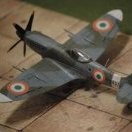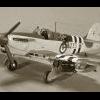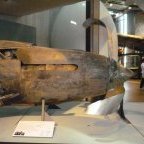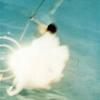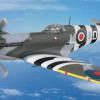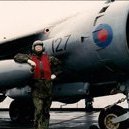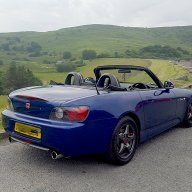Search the Community
Showing results for tags 'A6m2'.
-
On display at the 59th All Japan Model and Hobby Show 2019. Hobby Japan http://hobbyjapan.co.jp/ Sources: https://www.facebook.com/hobbyland.osaka/photos/a.1108794955873870/2512252288861456/?type=3&theater https://www.facebook.com/hobbyland.osaka/photos/a.1108794955873870/2512252245528127/?type=3&theater V.P.
- 14 replies
-
- Hobby Japan
- Zero
-
(and 1 more)
Tagged with:
-
In 1982 this was my first kit as a kid. Did a crappy job building it back then. I didn't have paints then but it was in the characteristic 2 color Matchbox mold so didn't think about it too much as a kid but played with it a lot. This kit started it all for me. For whatever reason the Matchbox Zero rarely comes up on eBay in the US but a few yrs back I managed to get 2 at a reasonable price. I had started building one immediately and then abandoned it as I got busy with other stuff. This week as I was waiting for things to dry on my Spitfire builds I restarted this as a quick side build and here it is from 1982 the Matchbox A6M2. This was completely a 100% straight out of the box build. The 40 yr old decals held up really well. Note: the Kit first came out in 1972 so the decals might be 50 yrs old.
- 19 replies
-
- 56
-

-

-
- 1/72 Matchbox
- A6M2
-
(and 1 more)
Tagged with:
-
This is Tamiya's 1/48 Zero, (originally issued in the 1970's), with some extra detailing on the engine, exhaust from aluminum tubing, detailing on the landing gear, and an Eduard's photoetch cockpit set, with extra cockpit detail added. Antenna mast and pitot replaced with brass parts. Paints are Tamiya acrylics, weathering with oils and pastels, and a mix of kit (yes! 50 year old decals!) and Techmod. Thanks for looking, Colin
-
Hi everyone, not happy to enter my unfinished Etendard IV M in the KUTA GB, I have decided to throw in as well the 1/72 Airfix A6M2 Zero. Shame on me! This build was started in April 2014 on this very site... Not sure why I stopped then. Possibly because I was unhappy with the canopy, but all these years later I tell myself that only Zero afficionados will notice any problem. I can live with that. I had already painted the underside and most of the small ancillary equipment, so really there is mainly the topside to paint. This is what has decided me to finish this Zero ASAP. See you soon. JR
-
Hi all This is my 3rd model for this year This time I choosed the classical Mitsubishi A6M Zero. I build this model for a friend who has choose the A6M2 early model The kit is the Hasegawa kit. No major problem on this kit. The sole advice is to glue the upper wing on the fuselage before glue the lower wing. Some othe photos in the link bellow Mitsubishi A6M2 Zero
-
Hi For my new build I decided to make a model for a friend. I let him the choose of the subject and he choosed the A6M Zero. Like he prefere the "light grey" scheme, I proposed him the A6M2 version When I searched a model, it is a suprise to find only few model by the kit maker for this early war version. In the 1/48th scale I find only two kit ; the old Tamiya who have more 30 years old and the Hasegawa kit Because the Hasegawa have more details than the Tamiya kit I choosed it. I start the kit with the cockpit I glued the panel side directly on the fuselage. I haven't have the "mitsubishi interior color". I seen some photo and try to capture the color with a mix of the H312 and H308 paint I painted some buttons in red/yellow I maked the seatbelt after have look the photoetched part by eduard. I drilled also the holes on the seat. I painted the engine. Hasegawa give a descent representation of the Sakae 12 Now I can verify the fit of the wing-fuselage and it is a big disapointement The gap between the two pieces is very great. I think, the best way is to glue plastic card on each upper wing part to fill the gap
-
Doyusha is to re-release three Mitsubishi A6M2 Zero Type 21 kits - ref.40247 - Mitsubishi A6M2 Zero Type 21 Source: https://hlj.com/1-32-scale-mitsubishi-a6m2-zero-type-21-dys40247 - ref. 40248 - Mitsubishi A6M2 Zero Type 21 bomber Source: https://hlj.com/1-32-scale-mitsubishi-a6m2-zero-type-21-bombing-dys40248 - ref. 40249 - Mitsubishi A6M2 Zero Type 21 Pearl Harbor attacker Source: https://hlj.com/1-32-scale-mitsubishi-a6m2-zero-type-21-pearl-harbor-attacker-dys40249 V.P.
-
Hasegawa's 2018 reboxing of their 1:72 Zero with markings for Yoshika Miyafuji´s (Fuso Empire) striker of the Strike Witches anime. You may remember I already did two models based on this show, Getrud Barkhorn's Fw 190D-9 and Me 262 in 1:48. A fair amount of flash on the kit, even though the base kit of this 2018 reboxing was first done in 1993. Anyways, with all my models being in 1:48, I had forgotten how small 1:72 fighters were. Thinking back, I can´t believe I once built a 1:144 Fw 190 either. Decals were standard Hasegawa, thick but useful.
- 2 replies
-
- 6
-

-
- hasegawa
- mitsubishi zero
-
(and 1 more)
Tagged with:
-
I'm building Tamiya's 48th A6M2 Type 21, not the best kit, part of one wing was short shot and the cowling has little to no contact points, so it glues where it touches. I also sanded away by accident part of the raised detail while trying to remove CA on the fuselage. What I wanted to know is if I could paint the aircraft in RLM 02 to simulate the Ame Iro, or just play stupid and paint it in light grey as shown in the coloured poster of the kit. My objective is to paint it as Saburo Sakai's V-103 A6M2 Type 21. I'm not trying to be super accurate, I want something passable. Thanks!
- 8 replies
-
- A6m2
- Saburo sakai
-
(and 1 more)
Tagged with:
-
A model that should be replaced by a new tool soon by Tamiya, their A6M2 Type 21 in 1:48, because the top left wing was short shot and had to be filled. Brushpainted with Revell acrylics in RLM 02. I used the kit decals and sunk them in hot water so they would conform into the panel lines. The blue tailbands were painted.
- 4 replies
-
- 12
-

-
- a6m2
- saburo sakai
-
(and 1 more)
Tagged with:
-
This is not a kit for the beginner, which is a shame as I don't know of any other small scale 2 seat zero kits around. The injected molded parts suffer from severe mold misalignment to the point where manufacturers had to include resin tail plane and other small pieces as the injected parts were junk. What they should have done was retooled the kit and made sure the parts were molded better. I built this model for a friend and fortunately he didn't want the aircraft in a target towing set up, because much of the tow gear was so badly molded it was unusable. Even so, the rear fuselage insert doesn't fit and that was built up with super glue and sprue. The nose and cowling are a mess, but I managed to carve out something that looks like a zero nose from the globs of plastic. The photo etch for the gear bays had to be trimmed to fit, but it wasn't too bad. Fortunately the vac formed canopy is nicely done and the decals are quite good. If you really want a 2 seat Zero in 1/72, I would suggest buying this kit and taking out the canopy, second cockpit, decals and if you must some of the towing and winch gear and grafting it onto the Airfix Zero. That said, I'm quite pleased with the end result of my hacking and sanding!
-
Here is my latest completion: it's the new-ish tool Airfix 1/72 A6M2 Zero from the original release boxing. I took some liberties with the camo scheme, painting it like an A6M5; since this aircraft was from a training squadron later in the war, I figured that was reasonable. I am aware that the underside colour should probably be trainer orange yellow, but went with Gunze IJN Grey anyway. Paint chipping was accomplished with a silver pencil. It's the first time I've tried this and, while my technique still needs some work, I'm happy with this as my first attempt. It is easier than trying to dab random blobs of silver paint. Hope you like it! Airfix A6M2 Zero in 1/72 by Russell Taylor, on Flickr Airfix A6M2 Zero in 1/72 by Russell Taylor, on Flickr Airfix A6M2 Zero in 1/72 by Russell Taylor, on Flickr Airfix A6M2 Zero in 1/72 by Russell Taylor, on Flickr Airfix A6M2 Zero in 1/72 by Russell Taylor, on Flickr Airfix A6M2 Zero in 1/72 by Russell Taylor, on Flickr Airfix A6M2 Zero in 1/72 by Russell Taylor, on Flickr Airfix A6M2 Zero in 1/72 by Russell Taylor, on Flickr Airfix A6M2 Zero in 1/72 by Russell Taylor, on Flickr Airfix A6M2 Zero in 1/72 by Russell Taylor, on Flickr
-
Hello, i´m new here and wanted to share with you my most recent Build, the Tamiya 1/72 Zeke (Kit no. 60779 i think). The Kit is a little gem, it almost fell together by itself. Also was building this kit the first time i reriveted something, the only thing this little kit really needed. For paints i used Tamiya plus Vallejo Model Air and Metal Color, applied with a Painbrush. Also for the first time I sanded lightly the paint down bringing those rivets to life. Then some stains with a cotton bud, a light dark grey wash and a little bit of drybrushing. I hope you enjoy the Pictures! P.S.: I´m still figuring out how to properly take pictures with my camera and how to post them, so next time the pictures should be better.
-
Tamiya 1/48 Mitsubishi A6M2 Zero (Zeke) (x2) "Build Update #1" Hello Guys, This is my latest build that I started a couple of weeks ago, but haven't had the time to jump on here and post my build progress, until now. So, here goes.... I've decided to build two A6M2's at the same time, so that I can model one in the Aircraft carrier based all over Japanese Navy Grey/Green color and one in the ground based Japanese Navy Green upper and the Japanese Navy Grey lower. The Grey/Green version will have little chipping, but the Green version will have heavy chipping. The chipping will be done by using the "hairspray" technique. These will be my 18th and 19th model builds since starting modeling in January 2014, and, they will be my first ever attempts at Japanese WWII aircraft, so, I've been looking forward to doing these. They are also my entries into a group build that I am hosting on YouTube called the "For the Love of Freddy" GB. He's a fellow modeler on YouTube that has surprised many modelers, including myself, with his altruistic nature, by sending them large parcels full of models. He sent me 4 parcels in the last two months containing a total of 43 model kits, mostly 1:48 scale and some 1:32 scale. And, therefore, because of his kindness and generosity to myself and other modelers, I thought that I would start this GB, which I did on May 1st and it will run until August 31st. These two "Zeros" were kits that Freddy sent to me, so, I thought it was a fitting tribute to Freddy by building them. Anyway, that's enough of the introduction, let's get on with the build..... As always, I start my builds by washing the sprues in warm soapy water... Next, I assembled both drop tanks, one for each plane... I then put all the small parts onto cocktail sticks in preparation for painting... All parts were then taken to the spray booth for airbrushing a black base coat onto.... When the black base coat was dry, I then airbrushed Cockpit Interior Green onto the fuselage interiors and onto the cockpit tub parts.... I then made a start on detailing the cockpit tub and added the instrument panel decals, then assembled the separate parts to form the tub.... I then started on the radial engine parts and cowlings, and assembled them when the paint was dry... It was now time to assemble the cockpit tubs into the starboard side fuselage halves and then assemble the portside fuselage halves onto the starboard side... It was now time to assemble the wings and horizontal stabilizers onto both planes... First, I assembled the bottom wing sections to the underside of the fuselage assemblies... Followed by assembling the starboard side upper wing sections, then the portside upper wing sections, taping the wings to set the dihedral and to hold them in place whilst the glue set. I then glued the horizontal stabilizers into position... When the glue had set, I removed the tape and checked both planes to see how they looked so far... Well, that's it for the first update. Next, I will prepare the planes for priming and applying paint. Thanks in advance for taking a look and commenting, much appreciated and in the meantime, if you'd like to watch my "Build Update #1" video on YouTube, here is the link for that: https://youtu.be/PBuSMyQB9bY Cheers, Martin
- 25 replies
-
- 3
-

-
Hi mates, This started out as an Out-of-the Box build to take a break and not get too carried away. But then I found myself adding very small diameter solder to represent tubing and lines in the cockpit, etc. So much for the OOB idea! This is, of course, the nice new Airfix kit of the A6M2b in the one true scale. Best $7.50 I ever spent! A prerequisite to building any Japanese aircraft model is to spend several hours studying the wealth of information on the web and trying to figure out what colour it should be painted! What a Pandora's Box that is! Yikes! I found what I needed on Nick Millman's blog. I can highly recommend picking up a copy of his "Painting The Early Zero" guide. This model will use the Airfix decals, but the paint scheme will need to be changed slightly. The aircraft represented by the transfers was actually used in training, so the undersides will be yellow-orange, not gray as Airfix states. That should make for an interesting combination with the IJN Dark Green on the top. But first, here's the obligatory shot of the carton: The cockpit is quite well detailed for 1:72 scale, as I'm sure you've read in the reviews. The rear bulkhead has a couple of ejector pin marks that need to be filled and the Euro buck gives you an idea of how small this thing is: The seat has the lightening holes moulded in, but I think they'll look better if they are drilled out. I used Gunze H303 FS34102 for the cockpit green as applied to Mitsubishi-built Zeroes. I added some small wire and solder to represent some piping in the cockpit, and I think it looks busy enough. The kit decals for the instrument panel are quite convincing. I used some 30-year old True Details "generic" Japanese seat harnesses and rudder pedals. Airfix provides a nice way for you to model the Zero with the wingtips folded, Just cut the outer sections away along a panel line, and replace with separate wingtips that have a hinge moulded in. I think that will add some interest, so off with the wingtips! I decided not to do any detailing on the engine, so I assembled it and gave it a quick paint job and wash. The moulding is nice, and there's quite a bit of detail considering it's only three pieces: Once the fuselage was assembled, I sprayed the undersides white, in preparation for the yellow-orange colour. My first thought was to use Gunze H24 Orange-Yellow, so I quickly applied a coat or two. But you know what? It's too orange. I went back to Nick's blog, and found some samples of the C1 through C4 colour chips and a nice photo of a canvas section from a trainer. You can view these at http://britmodeller....showtopic=66239 So now I needed to mix a colour that batter matched that sample. I used 50% Gunze H24 Orange-Yellow and 50% H34 Gunze Cream Yellow. I like this a lot better! To my eye, this is a good match for C2. Straight Gunze H24 is more like C1. I then used Gunze H59 Dark IJN Green on the top side. The number of "scallops" on the yellow-green demarcation line matches a photo of the actual plane, and not the Airfix box art. The cowling is black-blue, which I mixed from Model Master Black and Model Master Bright Blue. After I took the following picture, I decided to extend the black-blue from the cowling over the guns and to the instrument panel. I can't tell if the real plane was like that, but I've seen quite a few pictures of trainers that were. On the bottom, I then applied a lighter version of the yellow-orange on the panels to create some post-shading. Not so easy to see in the photo, but it's easy to see with your eye. I figure I'll give the panel lines a wash too. Next, I wanted to do the same on the top as well. So I sprayed lighter shades of the dark green and the blue-black. Next I'll have to do some clean-up on the wing folds, and spray that area aotake. Rather than use one of the pre-mixed versions of this "colour" (which tend to look like metallic custom car colours) I'll create the aotake by applying a base of Alclad aluminum and overspray with very light mists of Gunze Clear Blue and Gunze Clear Green. I've never done that before, so I guess I should experiment first! That's it for now. This is really a sweet little kit, and it's a far cry from the original Airfix Zero I built about forty years ago. Cheers, Bill
-
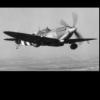
1/72 Airfix A6M2b Zero, Balikpapan defense
Wolwe82 posted a topic in Ready for Inspection - Aircraft
Hey everyone, today i finished my next build, A6M2b zero from the great Airfix 1/72 kit. From aftermarket i used awesome Marabu PE set, a bit of Eduards PE, obviously Eduard canopy masks, CMK barrells for guns and nice Rising decals. Whole surface got new rivets (not sure how much accurate it is, i had only one reference drawing). I did some scratchbuilding too, for those interested (and who doesnt want to go through whole WIP:) ) i did add: - some bits to the cockpit (other than the PE - lever on canopy, headrest, MGs, oil/fuel? tank and more) - bottles behind bulkhead - completely new wheel bays - enhanced engine + new exhaust tubes (not much of that is visible though) - new cowling flaps + intake on cowling - enhanced tail wheel + new hook holding (hook from eduard PE) - new balancing weights on ailerons - gear position indicators and some more details here and there For those who wants to check more, here is WIP link http://www.britmodeller.com/forums/index.php?/topic/234954406-finished-a6m2b-another-airfix/ By the way, big thank to everyone who looked at the WIP and helped and supported me in any way there At first i would like to show some pics of the stuff you cannt see much on the overall photos (when i already gave it the time, it would be sad to not show it ) the engine was enhanced just slightly, most of the stuff you cannt see anyway no matter how hard you try I had few disasters during the build, most of these because of lack of knowledge (how to do this and this), lack of skill and some just bad luck - like the trailing edge of the wing, the chipping there was not planned but bcause of accident, i had to do it.. All in all, here is the finished kit The folded wing tips ll be replaced once i get another airfix zero, so these are just placeholders for now One note to the camouflage/marking. It should be aircraft, used during Balikpapan defense operation and the grey areas on wings/ruder top side were painted additionaly as far as i know, so this kit represents the aircraft shortly after these were painted, thats why there are almost no scratches. Thanks for watching guys and i ll be happy if you leave any kind of comments or criticism- 48 replies
-
- 11
-

-
Evening guys, today i got home earlier from job and thought what will i do? I needed to take some rest from my current projects but it should not be anything too big, as at saturday are starting two new awesome GBs. So i was going through my stash and after a while the winner was here - A6M2b 1/72 from Airfix. Now i know there are many of these kits in WIP, but i hope you guys wont mind to have one more here. I got some sweeties to use for this build, so the first idea was, i ll just use the PE parts and that ll be it. No scratchbuilding, just pure fun build to have some rest. But.. seems i simply cannt build a kit without cutting, sawing, sanding, and whatever -ing and doesnt matter what it is or what aftermarket i bought.. Anyway, here is what i had at start The sprues are well known i guess, the PE parts are made by Marabu design and these are totaly a w e s o m e! Same as their other PE parts, very nice details, fiting is great (to the kit for which it is made), the metal is hard enough to survive bending yet thin enough to bend nicely if need. I found also some Eduards mask for Academy Zero, ll see if this one ll fit or not. As i started with the cockpit, i had the usual few seconds breaks when u wait for everything to dry and settle down. During these breaks i was looking on the wings/fuselage and thought if i could make some rivets. Did some quick research on web and found some rivets blueprint for A6M2. I could not follow it on 100%, because some of the panel lines on the kit were not on the same spot as it was on the blueprint. But i m not sure which one is correct and also didnt want to fill the lines and rescribe, so the rivet lines are as close to the blueprint as possible, but on few spots its a bit changed. Also, as it is just my second time doing rivets on whole plane, some of the rivet lines are not as narrow as it should be. But still i think it gives to the kit some more life. Here are few images, there is always one half of wing/fuselage with rivets and other without, for comparing. on the wing in middle of leading edge it looks weird i know, thats one of the spots where i had to turn a bit to meet the panel lines. might fill it there and make it somehow better looking, ll see yet. Few images of the interrior so far. the only thing i did not used from the PE parts was lever next to the pilot seat with its holding construction. I simply could not bend it to nice round(but i blame myself only, not fault of the PE), so i did a bit of trick to deal with it : drilled hole to thick plastic card, then carefuly cut and sand it around the hole to make the half-circle profile. After that i took my little saw and carefuly cut out thin strip to make opening for the lever. At the end i did cut the front side of the holder from the PE part and glued it on the plastic construction. This way its somehow rounded and And two shots of the cockpit base. I used evergreen platic cards and strips to boost the PE parts where it was too flat. Drilled holes to the bulkhead behind seat as it was indicated on the PE part and added few wires to the right side of cockpit. I found just three images of this side of cockpit and on all of these there was this chaos of wires, so i tried to copy it as closely as possible Also i did thin and reshaped the head-rest (sorry no idea how to say it correctly), drilled the holes from behing and on the front side i did add some plastic strip, which i then sanded to make it look like the leather padding there. As much as i would love to continue tonight, i have to wake up early to job so this is it for tonight Thanks for watching guys and if you ll have any hints or tips, feel free to go ahead
-
Nakajima A6M2-N Type 2 Fighter Seaplane Hasegawa 1:48 Japan was the only nation to produce and deliver into service float-equipped single-seat interceptor fighter seaplanes (the British Spitfire float adaptation did not progress beyond the experimental stage). When in 1940 the Japanese navy initiated the design of a new interceptor seaplane (the Kawanishi N1K1 Kyofu, or 'Rex'), the need was also expressed for a stopgap aircraft and the Nakajima Company was instructed in February 1941 to develop a float-equipped version of the excellent Mitsubishi A6M2 Zero naval interceptor. As evidence of Japan's long-standing plans for territorial expansion through the Pacific, it had been recognized that in the inevitable 'island-hopping' war there would be few ready-made air bases from which to provide air cover during the occupation of the smaller islands, and that the construction of runways would be impractical. Although equipped with almost a dozen aircraft-carriers, the Japanese would be unable to use them in support of every single island invasion. After removing the wheel landing gear and fairing over the wheel wells of a standard A6M2, Nakajima mounted a large float under the fuselage by means of a forward-raked central pylon and a pair of V-struts below the cockpit; two cantilever stabilizing floats were also mounted under the wings. The standard Zero gun armament was retained, and the first prototype was flown on 7 December 1941, the day on which the Japanese navy attacked Pearl Harbour. Entering production as the Nakajima A6M2-N and codenamed 'Rufe' by the Allies, the new fighter still displayed a creditable performance, being first issued to the Yokohama Kokutai and deployed to Tulagi in the Solomons where the Japanese had first landed during the Battle of the Coral Sea. However, almost all the 'Rufes' were destroyed in a strike on the seaplane base by 15 Grumman F4Fs from USS Wasp on 7 August 1942. Better success attended the 'Rufes' which fought in the later Aleutian campaign, but losses soared as soon as American fighter strength could be built up. During the final year of the war, when American heavy bombers and naval aircraft opened their great attacks on the Japanese homeland, 'Rufes' of the Otsu Kokutai, based on Lake Biwa, were thrown into the battle as interceptors in defence of Central Honshu but suffered very heavy losses. Total production of 'Rufe' amounted to 327 before being halted in September 1943. The Model The kit, the third re-issue, comes in a very attractive box, that Hasegawa seem to be very good at, with an artists representation of the aircraft in flight. Inside, the main sprues of grey styrene are all contained in a single poly bag, which, whilst not the best way of protecting the parts there doesn’t seem to be any noticeable damage. Fortunately the clear parts are contained in a separate bag. The parts are very well moulded, with no sign of flash and only a few moulding pips. It appears that since the real thing is based on a A6M Zero, Hasegawa have used their Zero to be the basis of this model. This means that there are quite a few spare parts, such as the lower wing, engine crankcase, undercarriage, drop tank and numerous smaller items. The build naturally starts with the cockpit, which is very nicely detailed, with the floor, fuselage sides, rear bulkhead, seat, rudder pedals, and joystick. The instrument panel has raised detail, but the dials are each provided as separate decals, which, with a blob of Kleer or gloss varnish will make them look quite realistic. Onto the panel the breaches of the fuselage guns are attached along with the gun sight. The completed assembly is then sandwiched between the fuselage halves as they’re joined together. The upper forward fuselage decking is then fitted, along with the machine gun muzzles. The construction of the engine is next. This is built up with the rear exhaust ring, the two banks of cylinders and the crankcase at the front, complete with pushrods. The engine is then attached to the front fuselage and covered by the one piece cowling onto which the two exhausts are attached. At this point the two single piece horizontal tailplanes are fitted. Before fitting the wing parts together, the holes for the bomb racks, if desired, need to be opened up. The instructions also say that the trim tab recessed panel lines, and a couple of other panel lines need to be filled on the upper wings. With the two upper parts attached to the single piece lower section the separate, clear navigation lights can be attached, along with what look like horn balances. The completed wing assembly is then attached to the fuselage. The two halves of the main floats are joined together with, according to the instructions, 16g of ballast in the nose section. The two, two piece wing floats are also assembled. The floats are then attached to their respective positions on the lower wing and fuselage, the main float, along with its support struts and boarding ladder. If the bombs are to be fitted and these are constructed of the bomb racks, crutch plates and the two piece bomb halves with separate horizontal fins. Once complete these can be attached to the lower wings. To complete the aircraft, the propeller, made up of separate hub, blades and spinner, is attached and the three piece canopy is fitted along with the aerial mast, which passes through the rear Perspex. TO complete the model there is a very nice dolly for the aircraft to sit on, this is made up of the main horizontal beams, support cradles, suspension mounting, axels and main wheels. The aircraft can then be posed on the dolly. Decals The decal sheet is nicely printed, in good register. Along with the standard Japanese markings there are the individual instruments and identification numbers for four aircraft from the Yokosuka Flying Group. Conclusion No matter that the kit has been released before it is still an interesting subject and will build into a very nice model. I imagine it will be subject to severe weathering for those that like that sort of thing, but that’s up to the individual modeller. Recommended. Amerang Hasegawa Review sample courtesy of UK distributors for
-
Mitsubishi A6M2a Zero Type 11 Combo 1:72 Hasegawa The Mitsubishi A6M Type 0 which became more infamously known simply as the 'Zero' entered operational service in 1940 as a replacement for the A5m which its self only entered service in 1937. The brief was to design an aircraft that had to make use of available engines which was a limiting factor at that time with outputs of sub 1000hp. To meet the need for a high performance long range fighter, the solution was to keep weight to an absolute minimum. This was partly achieved through a clever design using a new light weight alloy, but also by sacrificing armour for the engine and crew as well as self sealing tanks. First going into combat against Chinese Polikarpov I-15s and I-16s, considerable success was achieved. On the first encounter, 13 aircraft were shot down without loss. Its success lay in its incredible manoeuvrability and range of about 1600 miles. The design had a low wing loading which heavily contributed to these characteristics as well as helping in its role of carrier based fighter for take off and landing. Early combat with US naval fighters enhanced its fearful reputation even further as it heavily outclassed its rivals in the Pacific. The balance began to shift in 1943 as new allied aircraft and better tactics began to appear where as the Zero became restricted by engine performance and lack of armour. Even the later variants only had engines of around 1100hp in comparison to engines delivering 2000hp in the US Navy line up. Allied pilots had learned not to 'mix' it with the zero's, instead they fought on their terms using tactics like the 'boom and zoom' where they would dive to make a high speed passing attack then climb to safety using the high energy they'd collected on the way down. US naval fighters of the time such as the Hellcat benefitted from more powerful engines allowing them to carrier plenty of armour. This armour often allowed the aircraft to take considerable punishment from Zero's and still get its pilot back. Although the zero remained in service and production until 1945, more capable aircraft had begun to replace it. By the war's end, around 11,000 aircraft had been built which had accounted for around 1500 US aircraft lost in combat. The kit When it comes to 1/72 Zero's, it's not surprising given its fame that there are several kits on the market. As well as the old Heller kits, Tamiya, Academy and Airfix have rivals on the market with the Airfix introducing a brand new kit recently. The kits contained in this pack aren't new moulds, they date back quite a few years. The artwork leaves you under no confusion as to what you might find in the box. On removing the lid you're presented with two packs, each containing one model kit. Each kit is supplied on 4 light grey sprues and of course a clear one. First impressions are good. Very little flash is evident, although there is some small amounts such as on one of the wing tips, but certainly nothing to give concern. Panel lines are recessed and very refined, in my opinion much better than the new Airfix kit which are much more pronounced and out of scale. The design of the kit is quite traditional, the fuselage being supplied in two halves with a one piece lower wing and individual upper wings. The control surfaces are moulded integrally to the wings and tail surfaces as is the tail wheel. Assembly starts with the cockpit. Typically Hasegawa, detail here is 'acceptable'. Compared to the cockpit detailing we've come to expect from companies like Eduard there is certainly plenty of room for improvement. There is a basic seat, rear bulkhead, floor, panel and control stick. If this bothers you, some additional detail to the panel and side walls as well as seatbelts might be an option to consider either through scratchbuilding or aftermarket if this leaves you underwhelmed. The cockpit is sandwiched between the fuselage halves and the nose gun panel fitted over the instrument panel once closed up. The wings are then mounted to the fuselage. The wheel wells are nicely detailed for the scale, although are quite shallow. The engine too is elegantly detailed with two separate banks of cylinders that need to be attached then the gearbox unit mounted to the front. The cowling is supplied on its own fret and moulded in one piece which is useful ensuring that you're not left with a seam to hide. The carburettor intake and exhausts are then mounted to this part to complete the nacelle unit. Taking a photo of the cowling was quite difficult due to the fret mounted around it in an unusual way. There is some flash and a fret cross member to remove from inside the cowling, so care should be taken in doing this to prevent any damage. The undercarriage legs and doors are excellent. The doors are very thin with some detail on both interior and exterior surfaces. Unfortunately the wheels have some protruding ejector pin marks on the tyres which will need to be sanded off which will be a delicate operation. The propeller comes with a hub, backplate and three individual blades that need to be fitted in place. The kit comes supplied with a long range belly tank typically used on long range missions. The canopy moulding is excellent for the scale, very thin and hardly any distortion. My only criticism here is the lack of an option to have an open cockpit. If you do prefer to have your cockpit open, an aftermarket option would be the solution. The decals Now here is a review of two halves. The decals themselves look very good. The print is very sharp and finely registered. Some stencil details are included to give the exterior some interest too. I am however disappointed at the options available. You have choice of a grey scheme with blue bands or a grey scheme with blue and white bands (see the box top shown at the top of the review). Four aircraft options are included as listed below, however I have come to expect somewhat more options included in my kits, particularly where two are included in the pack. At the very least, it would of been good to have some contrasting schemes included, particularly as this pack isn't placed at the budget end of the range. Decals are provided for the following: 14th Naval Group 1940: '9-182', '9-172' 12th Naval Group 1940 '3-163' and 1941 '3-183' Conclusion Well, this is certainly a good kit. It gives a good scale representation with some finely recessed panel lines and enough detail to give a pleasing build out of the box with typical Hasegawa quality. An open cockpit option and somewhat different decal option would of been a nice addition, however these are all available from the aftermarket if it's important to you. Out of the box by comparison, the new Airfix kit benefits from cockpit detail which is lacking in this kit, but the panel lines in Hasegawas representation are much more reserved looking much better in this scale. With two kits provided, you could build a pleasing little diorama of the two together which is something I'm considering with these. UK distributors for
- 12 replies
-
- Mitsubishi
- a6m2
-
(and 3 more)
Tagged with:


